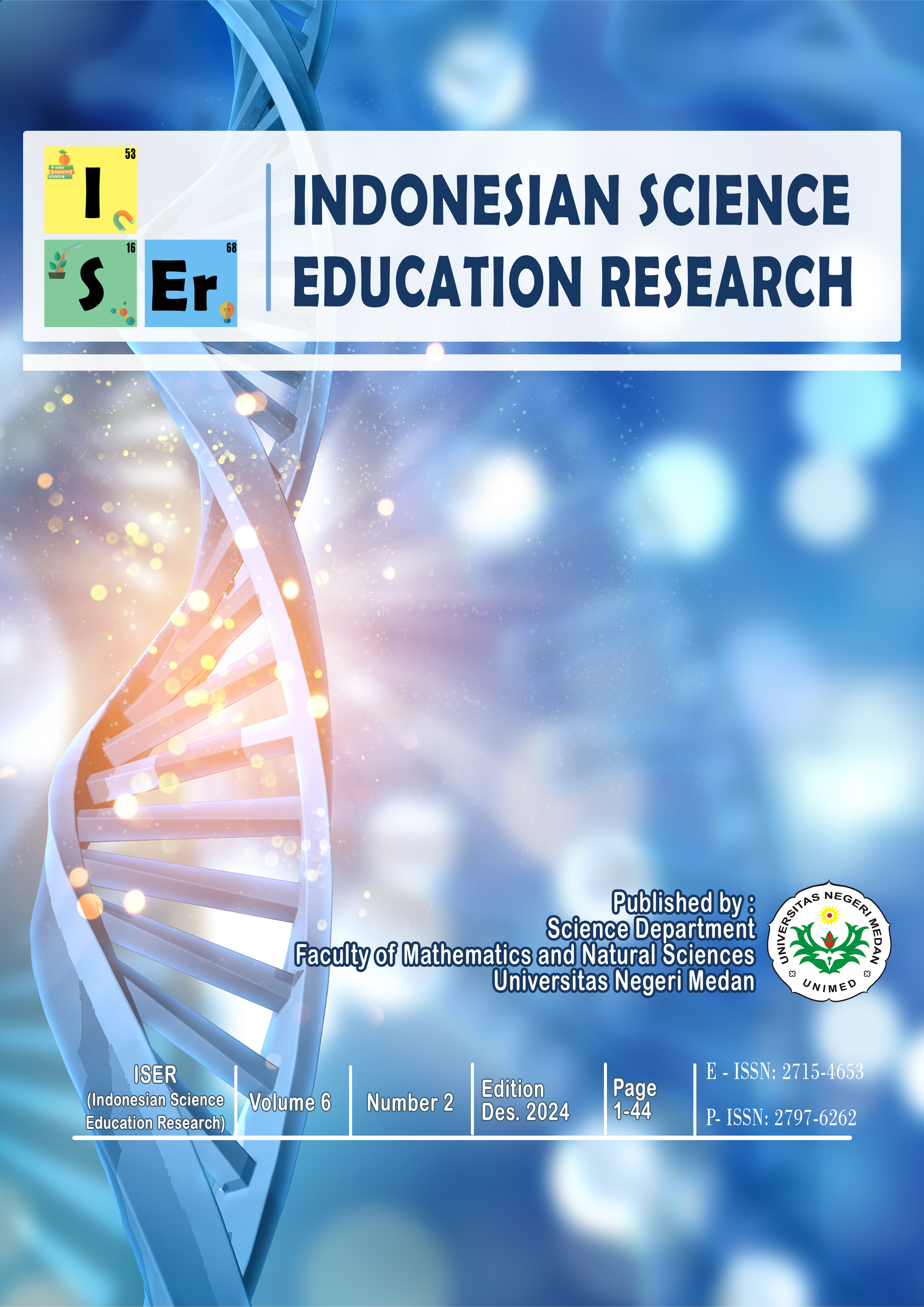THE INFLUENCE OF PROBLEM BASED LEARNING (PBL) MODEL ON STUDENTS CREATIVE THINKING ABILITIES ON ELEMENTAL, COMPOUND AND MIXTURE MATERIALS IN CLASS VIII OF SMP NEGERI 1 SEI RAMPAH ACADEMIC YEAR: 2024/2025
DOI:
https://doi.org/10.24114/iser.v6i2.66407Abstract
This research aims to determine the effect of the Problem Based Learning (PBL) model on students' creative thinking skills on the material of elements, compounds and mixtures in Class VIII of SMP Negeri 1 Sei Rampah in the academic year 2024/2025. This study uses a Quantitative method using the Quasi Experimental Design experimental method, the instrument used is a Test. The results of the study showed that the influence of the Problem Based Learning (PBL) Model was more effective in improving students' creative thinking skills in class than conventional models, the average post-test score of the Experimental class was 83.7 higher than the Control class with an average of 78.26. The Problem Based Learning (PBL) Model improves creative thinking skills in the four indicators of the post-test scores of the experimental class, namely fluent thinking with an average of 94.20, original thinking 89.42, detailed thinking 73.44 and flexible thinking 68.55. Meanwhile, the control class has an average of creative thinking indicators, namely fluent thinking with an average of 85.71, original thinking 81.23, flexible thinking 65.82 and detailed thinking 64.58. The PBL model improves creative thinking skills in all four indicators. The results of the N-Gain test show that there is an influence of the Problem Based Learning (PBL) model on students' creative thinking skills on the material of elements, compounds and mixtures in Class VIII of SMP Negeri 1 Sei Rampah Academic Year 2024/2025 with details of the Experimental Class 0.76 (High) and the Control Class 0.69 (Medium). Keywords: PBL, student, creative, thinking, materialsDownloads
Published
2024-12-31
Issue
Section
Articles


